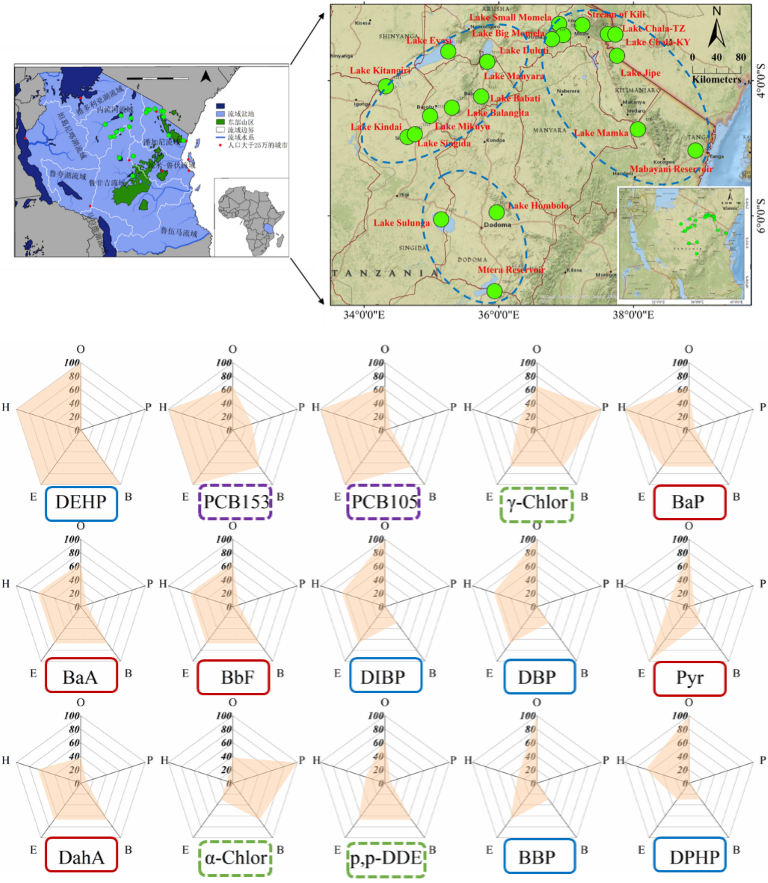Pollution characteristics of persistent and toxic organic substances in lakes of Tanzania
Due to the inadequate control of Persistent and Toxic Organic Substances (PTOS) in Tanzania, they are still many ways to transport into the lake environment, to threaten the lake ecology safety and human health.
To understand the status of PTOS pollution in Tanzanian lakes, Prof. Zhang Lu from the Joint Research Station for East African Great Lakes and Urban Ecology (affiliated to Nanjing Institute of Geography and Limnology, Chinese Academy of Sciences) led a joint group with Tafiri scientiest in early 2020 to conduct a field survey on PTOS pollution in East African lakes.
The study of 18 lakes in Tanzania shows that the distribution of PTOS has large spatial variations. Among the lakes, the PTOS level in Lake Jipe, Mabayani Reservoir, Lake Duluti and Lake Hombolo was relatively higher, while was relatively lower in Lake Chala, Lake Small Momela, Lake Babati, Lake Singida and Lake Kindai. Overall, the pollution levels of polycyclic aromatic hydrocarbons (PAHs), polychlorinated biphenyls (PCBs), and organochlorine pesticides (OCPs) in Tanzania lakes are relatively lighter compared to lakes worldwide.
Among the four major types of PTOS pollutants in Tanzania lakes, phthalate esters (PAEs) pollution is the more worthy of attention. Source identification shows that phthalate esters (PAEs), PAHs, HCHs and Methoxychlor have obvious watershed input characteristics. A multi-index comprehensive scoring method based on the measured concentrations of pollutants, the inherent properties of compounds (lipophilicity and hydrophobicity, structure-activity relationship), and lake ecological risks and health risks was proposed. Based on this method, a list of precedent-controlled PTOS pollutants (8PAEs,6 PAHs, 7 OCPs and 5 PCBs) for Tanzania lakes was built.
It was concluded that PAEs were the priority pollutants for drinking water safety and ecosystem health for Tanzania lakes. Therefore, Tanzania should control the production, use and emission of PAEs, especially around the lake areas, in order to reduce the impact of PTOS on lake water ecology.

